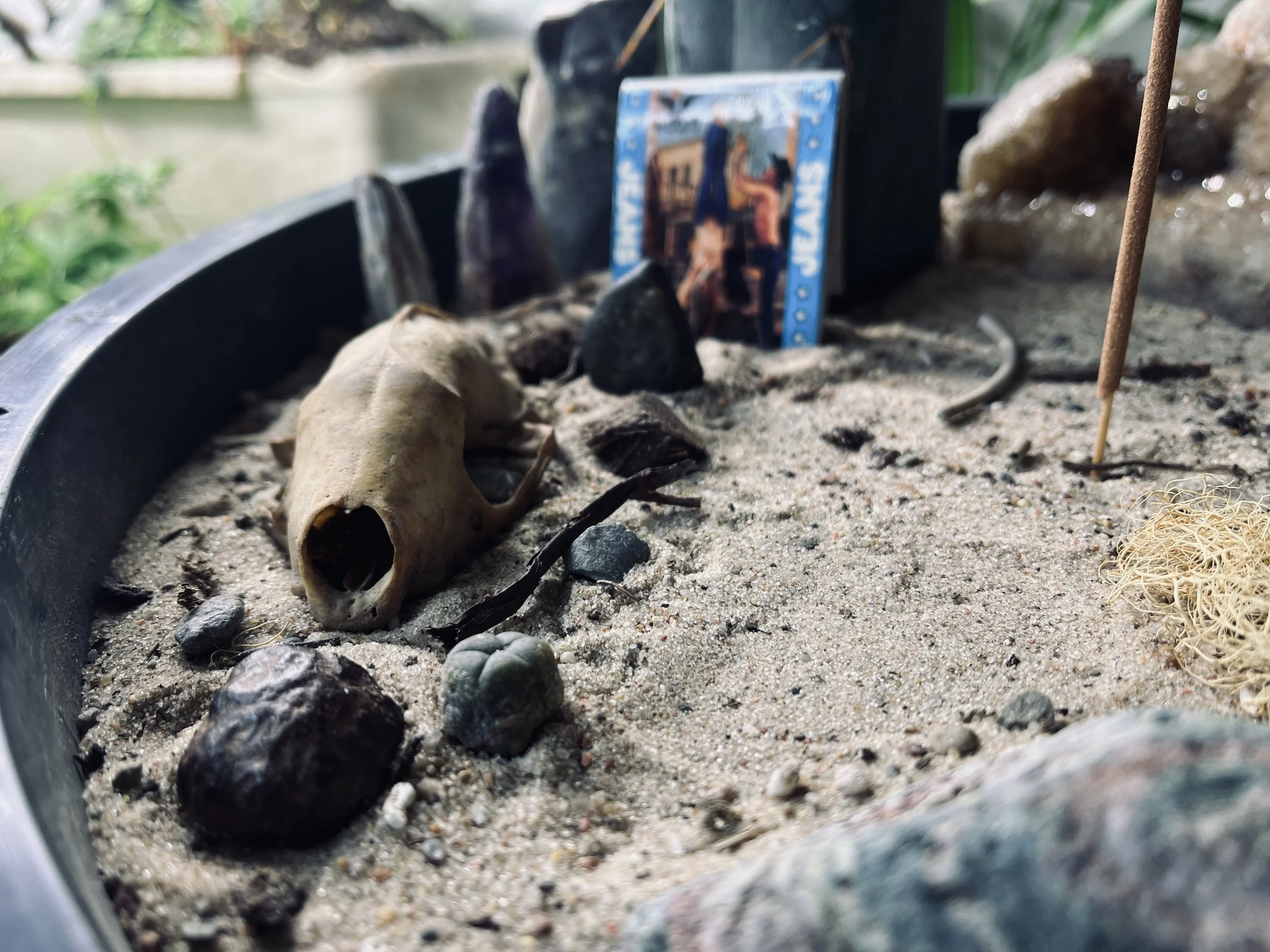A Sacred Space: How I Built a Psychedelic Cactus Garden That’s More Than Just Plant Decor
When you think of indoor house plants, you might imagine the usual suspects: a string of pearls trailing gracefully from a shelf, a fiddle-leaf fig stubbornly refusing to thrive, or a monstera photogenically splitting its leaves in indirect light.
But I didn’t want house plants to decorate my space. I wanted something more primal. More sacred. Something that wouldn’t just exist in my home, but demand my attention, my patience, my reverence.
So, I built a sacred psychedelic cactus garden. In a closet. In Berlin.
And let me tell you: it’s not just plant decor—it’s a goddamn temple.
The Beginnings: Two Tiny Peyotes
It started with two small peyote cacti—tiny, unassuming, and impossibly ancient. I got them a year ago, tucked them into their indoor planter, and placed them in my closet.
They weren’t showy. They weren’t lush or leafy like the trendy indoor house plants flooding Instagram. But that’s the thing about peyote: it doesn’t need to shout. Its power is quiet, understated, waiting for you to sit still long enough to notice it.
For a year, they sat there, surviving the brutal Berlin winters and my occasional neglect. Two little circles of wisdom.
But two wasn’t enough. Two is never enough.
The Call: Bringing the Desert Indoors
A few weeks ago, I decided to go all in. No half-measures. If I was going to honor these sacred plants, I had to build a space worthy of them.
So, I made the call—the kind you don’t make lightly. A box arrived at my door, discreet and carefully packed. Inside? A Bolivian torch cactus with sharp ridges that looked like it could cut glass. A San Pedro cactus, smaller but no less commanding.
These weren’t the kind of plants you casually place in handmade plant vessels and forget about. These were plants that demanded something more.
The Ritual: Building the Garden
I started with a large, shallow indoor planter—wide enough to hold the sprawling desert vision in my mind. Instead of standard potting soil, I filled it with sandy, rocky dirt—a mix that felt more like the arid landscapes these plants come from.
Each piece of the design had a purpose. Crystals were placed with intention: rose quartz for softness, a bird’s beak for mystery, a skull to remind me of life’s fleeting beauty.
I nestled the peyote at the center. Always the center. One of the originals, surrounded by five tiny pups I’d carefully separated to callous before replanting.
The result? A biophilic design unlike anything I’d ever created before. This wasn’t just about adding greenery to my home—it was about connecting to something wilder, older, and unapologetically raw.
The Sacred Stillness of Indoor Plant Design
When we talk about plant decor or interior plant design, the focus is often on aesthetics: how a unique planter can accent your space, how indoor plant pots can complement your natural decor.
But this garden? It’s not about aesthetics. It’s about stillness.
I moved it into my closet—not because I wanted to hide it, but because Berlin winters are unforgiving, and the closet offered warmth and protection. In that quiet, secretive space, the garden took on a life of its own.
No water. Not yet. These plants have their own timeline, and rushing it would be sacrilege.
This is biophilic design at its most intimate. A reminder that bringing nature indoors isn’t just about sustainable home decor or the latest trend in home remodeling. It’s about creating a space where you can sit, breathe, and leave things the fuck alone.
Natural Design Meets Sacred Ritual
Let’s be clear: this isn’t just an indoor planter filled with desert plants. It’s not just a collection of unique planters and handmade plant vessels, arranged for Instagram.
This is an altar.
Each piece was chosen with intention, from the sandy, rocky soil to the hand-selected crystals. Together, they create a space that feels alive—something wild and untamed in the middle of a cold Berlin apartment.
This is the essence of natural design: not just mimicking nature, but respecting it. Letting it guide you, rather than the other way around.
The Garden’s Rules: Leave It the Fuck Alone
The hardest part? Waiting. Not touching. Not rushing.
I haven’t watered the garden yet. And I won’t—not for another week, at least. Because here’s the truth: if you don’t know how to wait, if you can’t sit still and let the plants be, you’ll kill them.
And maybe that’s the point.
Sustainable home decor, biophilic design, plant decor—whatever you want to call it—works best when it forces you to slow down. To pay attention. To let the process unfold on its own terms.
Sometimes, the best thing you can do for your plants—and for yourself—is to leave them the fuck alone.
A Garden That Transforms Your Home—and Your Mind
If you’re thinking about starting your own sacred garden—or even just redesigning your space with indoor planters and natural decor—ask yourself this:
Are you ready to create something that isn’t just beautiful, but meaningful?
Are you ready to slow down? To wait? To let your plants tell you what they need, instead of trying to control the process?
If the answer is yes, then start small. A unique planter. A single cactus. A corner of your home that feels like a world of its own.
Because sometimes, the most powerful thing you can do… is nothing at all. What the video about it here






